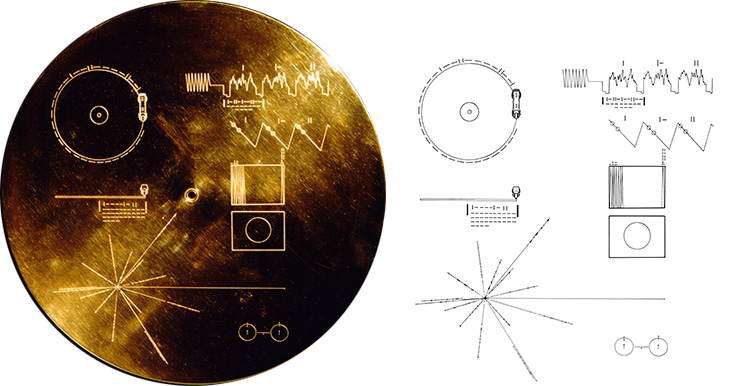2 Min Read
Marketing Beyond the Solar System
How do you market the human race?
That was the challenge confronting the scientists behind the Voyager mission.
In the late 1960s, astronomers noticed that Jupiter, Saturn, Uranus and Neptune sometimes aligned so that a spacecraft could use the gravitational pull of one planet to slingshot to the next, significantly cutting down on travel time and fuel.
This alignment only happens once every 175 years. The next was in less than a decade.
That singular opportunity to explore the outer reaches of our solar system was the birth of the Voyager program.
The United States launched two robotic probes – Voyager 1 and Voyager 2. Each collected data about the faraway planets and sent it to Earth using no more technology and processing power than a car key fob.
It was Voyager that first showed that Jupiter has rings and photographed three previously undiscovered moons around Saturn.

Reaching Alien Audiences
After passing the outer planets, the probes continued into interstellar space with no definite endpoint. Scientists at the time, including Carl Sagan, recognized the significance of this fact. The Voyager probes could be the first pieces of the human race discovered by aliens.
Voyager wasn’t just a scientific mission, it was a diplomatic one as well.
Sagan and his team were faced with an incredible messaging challenge. How do you represent Earth and humanity to an alien race you know nothing about?
They started with a simple ground rule: Make the messages as simple as possible while conveying as much information as possible. (Anyone who’s drafted a product sheet or a press release can relate.)
The team came up with a powerful (if already somewhat outdated) solution.
To each Voyager probe, Sagan and his team attached a golden record to serve as a time capsule and introduction to Planet Earth and the humans who inhabit it. The records have recorded greetings in 55 languages, whale song records, and music from Bach, Chuck Berry and more. It also includes visuals of universal scientific principles and diagrams illustrating the Earth’s location in the cosmos.
The Voyager probes are still traveling through space, and they’ll continue to communicate with Earth through 2030. Even if they’re never discovered by an alien world, their mission and messaging remains significant here on our planet.
Here’s how Jon Lomberg, NASA’s Design Director for the golden record, puts it:
“Whatever happens to it in space, whatever its unknown destiny is, I think it represents a high water mark of our civilization when we dreamed the biggest dreams. I hope it will serve as an example and inspiration for people to keep dreaming.”